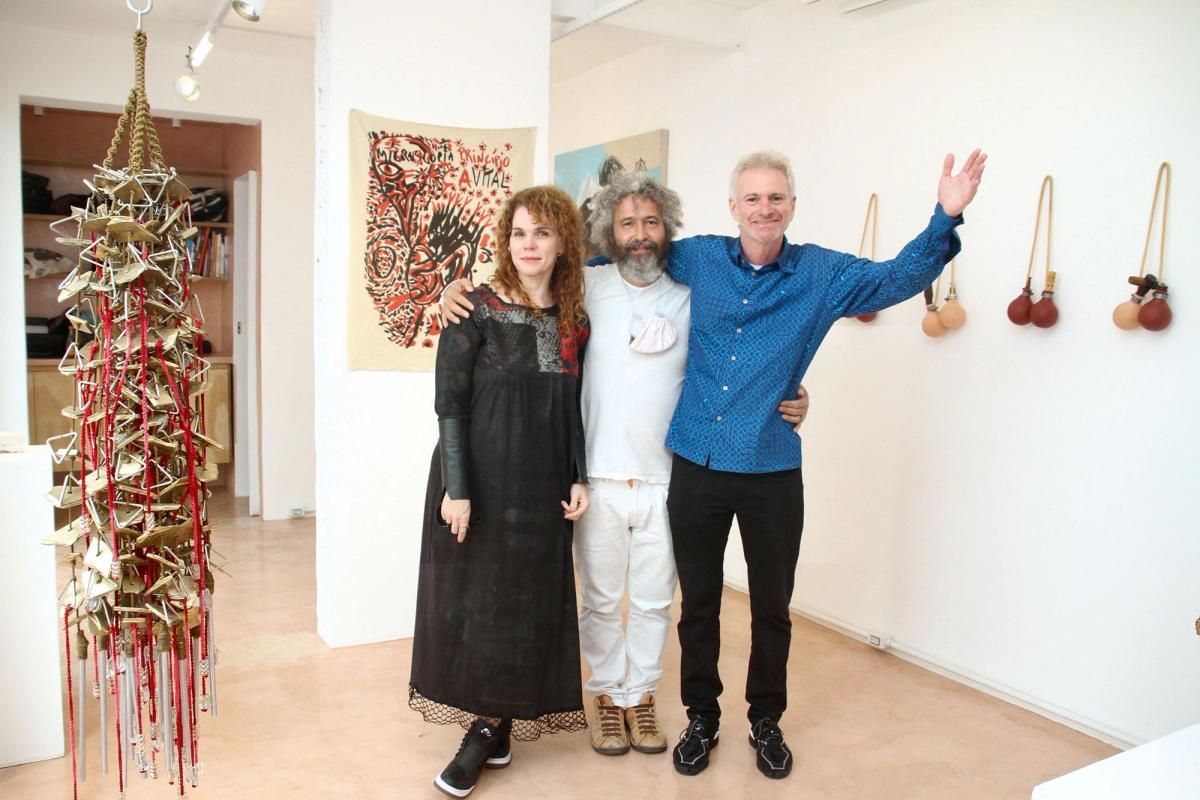Artist-run galleries tend not to enjoy great longevity or serious commercial success, let alone both. This makes the 20th anniversary of A Gentil Carioca—the Rio de Janeiro-based gallery founded in 2003 by artists Márcio Botner, Laura Lima and Ernesto Neto—so noteworthy. In an era of consolidation, the venture’s community investment projects, open-minded alliances between the public and private sectors and unexpected aptitude for art fairs have made it not just unusual but unusually sustainable.
Today, A Gentil Carioca (“a gentle native of Rio”) works with institutionally acclaimed artists such as Denilson Baniwa, Jarbas Lopes and Renata Lucas as well as cutting-edge talents such as Vinicius Gerheim, Agrade Camíz and the OPAVIVARÁ! collective. Its exhibitions span two historic buildings: a headquarters in downtown Rio’s sometimes-chaotic Saara district and an outpost in São Paulo established in 2021. The programme and its locations set the venture apart from the Rio galleries largely concentrated in the upscale Ipanema neighbourhood to the south. They also represent an evolution from A Gentil Carioca’s inauguration in Botner’s studio, where the art often had to be moved aside for parties.
“We didn’t want to consider ourselves as much of a gallery, so we avoided the word ‘galeria’ in our name,” Neto tells The Art Newspaper of the partnership’s beginnings. “But everything was dry in Rio in the early 2000s, and starting a non-profit wasn’t a good idea.”
From grief to growth
This was a difficult time for Brazil’s national economy and Rio’s art scene, which was deeply shaken by the death of Marcantonio Vilaça, the influential 37-year-old collector and dealer behind Galeria Camargo Vilaça, in 2000.
“A lot of things began to download in my spirit, and I began asking Márcio and Laura what Marcantonio would do in this or that situation,” Neto says. In their period of mourning, the three artists realised “artworks have spirits that sprout some energy—emotionally, socially and politically”, Neto adds. This challenging period helped motivate the trio to open A Gentil Carioca on 6 September 2003.
Two years of experimentation led to a series of turning points in 2005. The first was the launch of Parede Gentil (“gentle wall”), a now signature series of murals on the gallery’s monumental exterior. “We were looking at our giant wall from the outside at a bar and realised art in public can contaminate people in a good way,” Botner says. The founders invite a collector to fund each new mural, transforming private taste into a public benefit. The 39th work in the series, Yhuri Cruz’s portrait of Escrava Anastácia—an enslaved African woman revered as a folk saint by Brazilians of multiple faiths—debuted in September.

Yhuri Cruz’s portrait of Escrava Anastácia for the gallery’s Parede Gentil mural series
Photo: Pedro Agilson
Alongside Parede Gentil, the gallery also established Camisa Educação (“educational T-shirt”), a programme that invites artists—some represented by A Gentil Carioca, some not—to design limited-edition shirts celebrating learning. Now in its 18th year, the initiative has produced 89 different shirts, with the designs sold at the gallery’s opening receptions. Sales proceeds from each collection provide the funds for the next edition.
Thriving on the art fair circuit
Lastly, in 2005 the New Art Dealers Alliance (Nada) invited A Gentil Carioca to exhibit at its Miami fair, which runs concurrently with Art Basel in Miami Beach every December. “I told Laura and Ernesto that a fair whose name means ‘nothing’ in Portuguese wants to show us,” a bemused Botner says. Accepting that invitation initiated the founders into the international art fair circuit, where they have thrived ever since. Besides local events such as ArtRio and SP-Arte, the gallery has become a staple at all four annual editions of Art Basel and an occasional participant in the Independent art fair. Botner has even served on Art Basel Miami Beach’s selection committee for the past decade.
“What I like about art fairs is that all galleries are balanced on the same social level, whether they are located in downtown, or the rich or the poor zone,” Neto says. Operating on “the other side of the table” as a gallerist has also improved his working relationships with his own dealers, who include Tanya Bonakdar Gallery, Galería Elba Benítez and Galerie Max Hetzler.
This duality has driven the founders’ interest in championing young talent. Paramount in this effort is Abre Alas (“open wings”), A Gentil Carioca’s annual group show dedicated to emerging artists. What started in 2004 with the gallery’s three founders selecting from a modest number of mostly local candidates has grown into a juried process led by an invited curator and an established artist choosing from around 500 Brazil-based and international applicants. The 19th edition of Abre Alas opens in February 2024, another milestone on the gallery founders’ unexpected journey.
“I don’t know who I would be today if I didn’t have A Gentil Carioca with Laura and Márcio,” Neto says. Twenty years after the gallery’s founding, Rio’s art scene could say the same.


